- India
- International
Rhododendron: A floral blend of beauty, flavourful delights, and wellness
Rhododendrons are not just visually stunning but also have immense utility and potential in sustainable livelihoods as it provides alternate economic opportunities to rural and forest communities
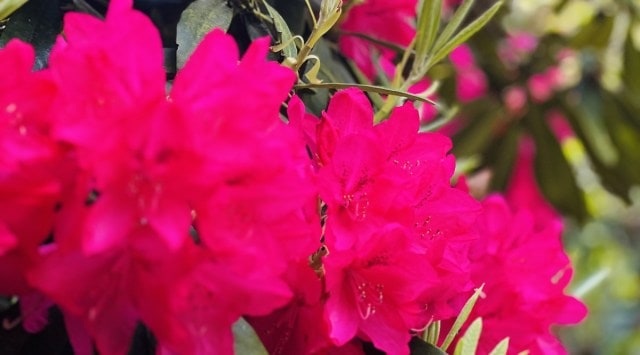 Forest departments are exploring the economic potential of these flowers by strengthening forest-based livelihoods. (Source: Swasti Pachauri)
Forest departments are exploring the economic potential of these flowers by strengthening forest-based livelihoods. (Source: Swasti Pachauri)Rhododendron, a native species of the Himalayas, is a beautiful, often evergreen flowering tree or shrub that thrives in alpine and temperate climates. In the picturesque hilly terrains of Uttarakhand, Himachal Pradesh, Nagaland, and Sikkim in India, the vibrant blossoms of rhododendron signal the arrival of spring. Notably, Kohima in Nagaland (the Japfu Peak) boasts the distinction of being home to the tallest rhododendron tree in the world. Meanwhile, the enchanting Rhododendron Arboreum, locally known as ‘Burans/Buransh,’ adorns these regions with varying pink, red, and occasionally white hues. However, it’s important to note that the stunning purple/ mauve variety, the Rhododendron Pontica, found in certain European countries and the UK, threatens biodiversity as it is invasive and toxic.
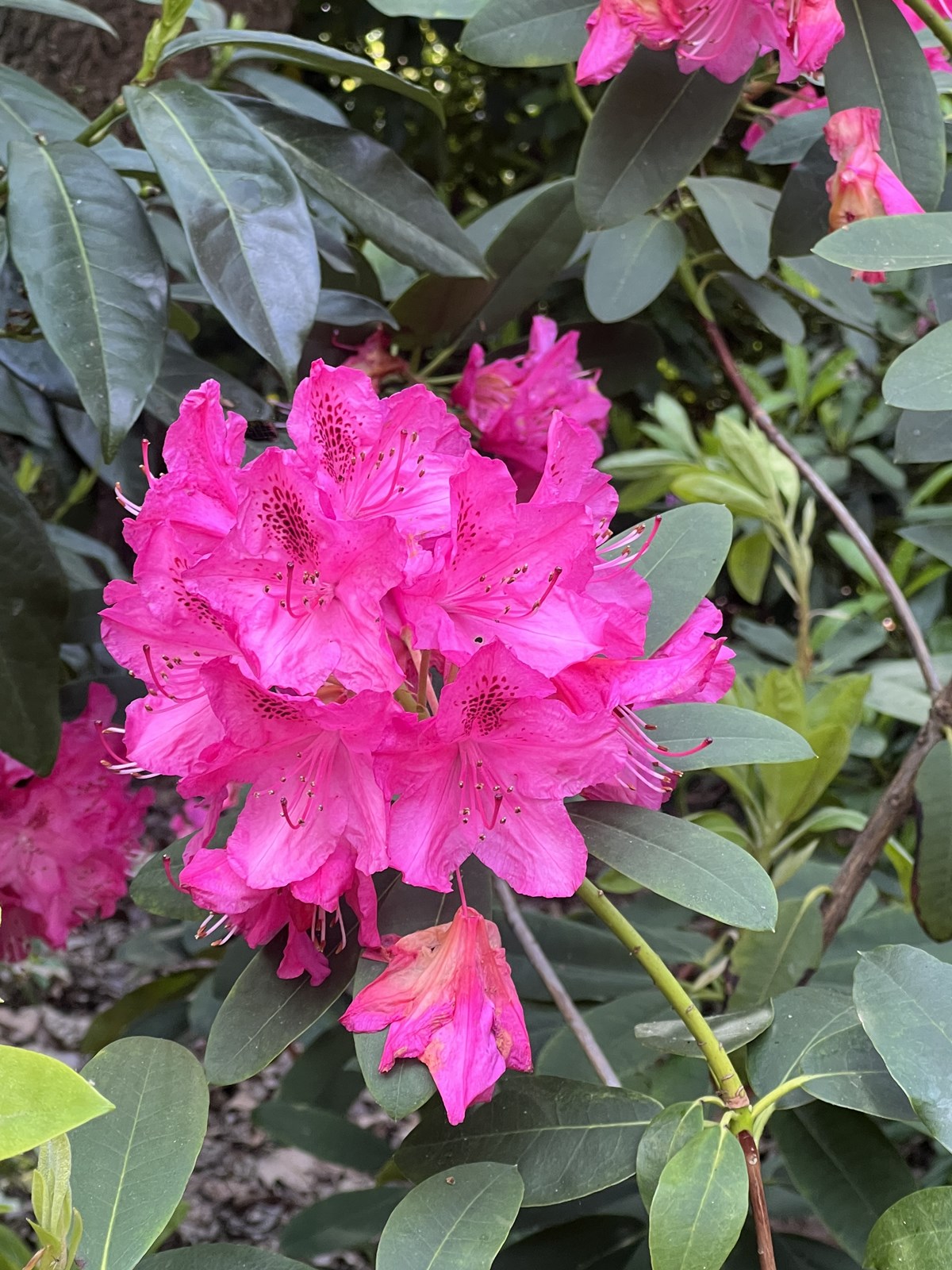 Rhododendron, a native species of the Himalayas, is a beautiful, often evergreen flowering tree or shrub that thrives in alpine and temperate climates. (Source: Swasti Pachauri)
Rhododendron, a native species of the Himalayas, is a beautiful, often evergreen flowering tree or shrub that thrives in alpine and temperate climates. (Source: Swasti Pachauri)
In recognition of its cultural, geographical, and ecological significance, Rhododendron Arboreum, or ‘Buransh,’ is designated as Uttarakhand’s state tree and Nagaland’s state flower. The pink rhododendron or Rhododendron Campanulatum, also known as ‘gulabi buransh,’ is the state flower of Himachal Pradesh. Similarly, Rhododendron Niveum, locally known as ‘hiunpatay guransh,’ is honoured as the state tree of Sikkim.
 The pink rhododendron or Rhododendron Campanulatum, also known as ‘gulabi buransh,’ is the state flower of Himachal Pradesh. (Source: Swasti Pachauri)
The pink rhododendron or Rhododendron Campanulatum, also known as ‘gulabi buransh,’ is the state flower of Himachal Pradesh. (Source: Swasti Pachauri)
Rhododendrons are visually stunning and have immense utility and potential in sustainable livelihoods because they provide alternative economic opportunities to rural and forest communities. For instance, the Himachal Pradesh State Rural Livelihoods Mission actively supports and encourages the Buransh value chain in the food processing industry by engaging farmers and local people. The petals of Buransh flowers, or the species Rhododendron Arboreum, are widely used in the production of squash, jellies, jams, and pickles. The blooming of Buransh in the valleys of Uttarakhand and Himachal Pradesh during March-April sees active engagement from both men and women in the harvest of these blossoms.
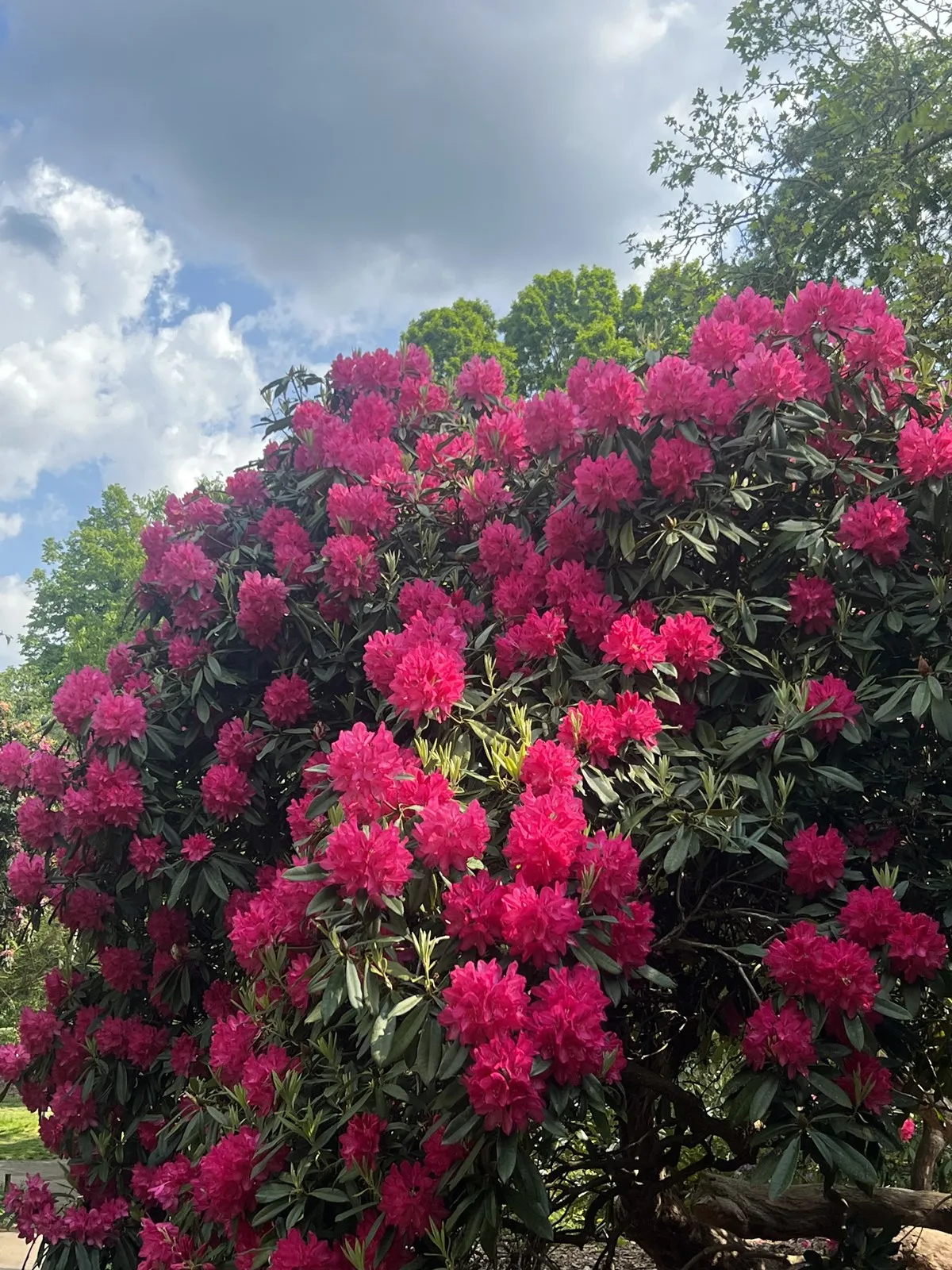 hododendrons are visually stunning and have immense utility and potential in sustainable livelihoods because they provide alternative economic opportunities to rural and forest communities. (Source: Swasti Pachauri)
hododendrons are visually stunning and have immense utility and potential in sustainable livelihoods because they provide alternative economic opportunities to rural and forest communities. (Source: Swasti Pachauri)
Among the wide varieties, it is essential to note that this Rhododendron Arboreum, or the edible Buransh, is bright red and easily recognised during spring. After the flowers are collected, they undergo sun-drying. After removing the flower’s stamen and stigma, the petals of the red flowers are separated. The petals have a particularly tangy and sour taste, making them a sought-after ingredient in various indigenous recipes, including flavourful chutneys. The sun-dried petals are also used in tea infusions, Buransh chai, pakoras, and a speciality known as ‘Kachru’ that is prepared with vegetables like spinach.
 Buransh also has massive potential in detox products, and its edible portions can be used to prepare detox water and teas. (Source: Swasti Pachauri)
Buransh also has massive potential in detox products, and its edible portions can be used to prepare detox water and teas. (Source: Swasti Pachauri)
In Rishikesh and other parts of Uttarakhand, many hotels and resorts offer Buransh sherbet as a refreshing welcome drink, providing direct support to the local livelihoods that depend on cultivating and utilizing these remarkable flowers. In some regions of the world, beautiful non-toxic rhododendron flowers are used in making incense, candles, and essential oils, making their applications relevant to the aroma industry.

Jasleen Kaur, a dietitian, nutritionist, and founder of Just Diet, says buransh also has massive potential in detox products, and its edible portions can be used to prepare detox water and teas. The edible rhododendrons are rich in antioxidants, help fight inflammation, and have enormous applications in homoeopathy and herbal medicines. The petals are also distinctly recognised for their flavour and as a masala/spice.
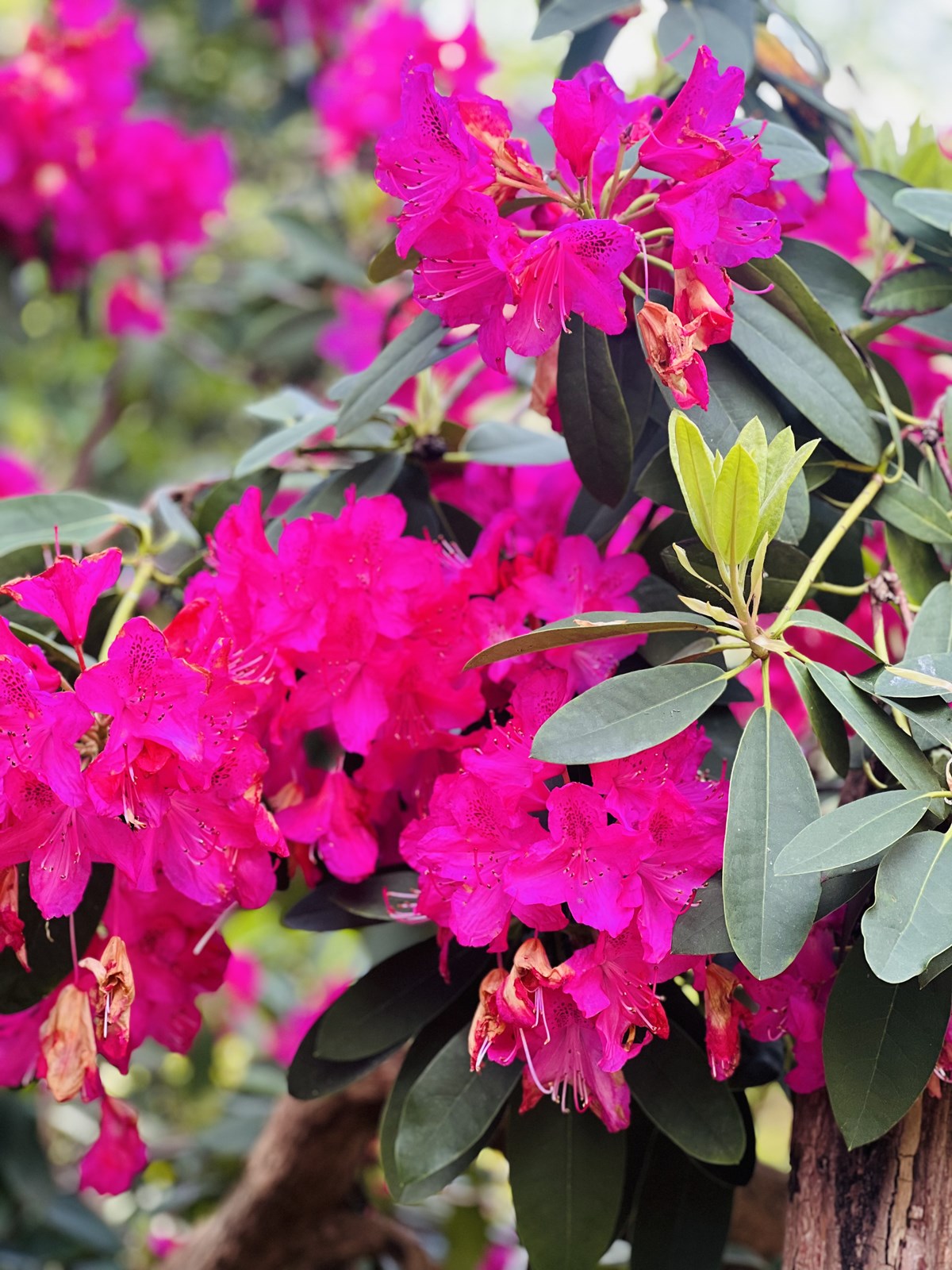 In some regions of the world, beautiful non-toxic rhododendron flowers are used in making incense, candles, and essential oils, making their applications relevant to the aroma industry. (Source: Swasti Pachauri)
In some regions of the world, beautiful non-toxic rhododendron flowers are used in making incense, candles, and essential oils, making their applications relevant to the aroma industry. (Source: Swasti Pachauri)
Forest departments are exploring the economic potential of these flowers by strengthening forest-based livelihoods. The flower has immense potential in food processing and alternate agricultural, forest-based livelihoods, empowering self-help groups and farmers, particularly women. In addition, schemes such as the PM Van Dhan Yojana and the supply chain support through Van Dhan Vikas Kendras can play a pivotal role with rural livelihood schemes such as the Deen Dayal Antoyada Yojana – National Rural Livelihoods Mission, just as they have been supporting a rare Himalayan species called the seabuckthorn and the value chain around it.
Buransh in India has the potential to create floral tourism opportunities taking after Japan’s cherry blossom tourism industry. Toward this, worldwide, nature walks are organised to celebrate the rhododendron flower. In Kausani, Uttarakhand, the Buransh Mahotsav is organised annually, celebrating Uttarakhand’s rich folklore. Similarly, the Royal Botanic Gardens at Kew have a particular alley called the Rhododendron Dell. According to the Kew Gardens website, it was Sir Joseph Hooker who brought back many new rhododendron specimens from his travels to the Himalayas in the mid-19th century. At Kew, the calming and peaceful ‘Maharani’ white rhododendron and rare orange and yellow flowers steal the show. Such efforts boost eco-tourism worldwide, particularly sustainable rural tourism in economies that need to scale up.
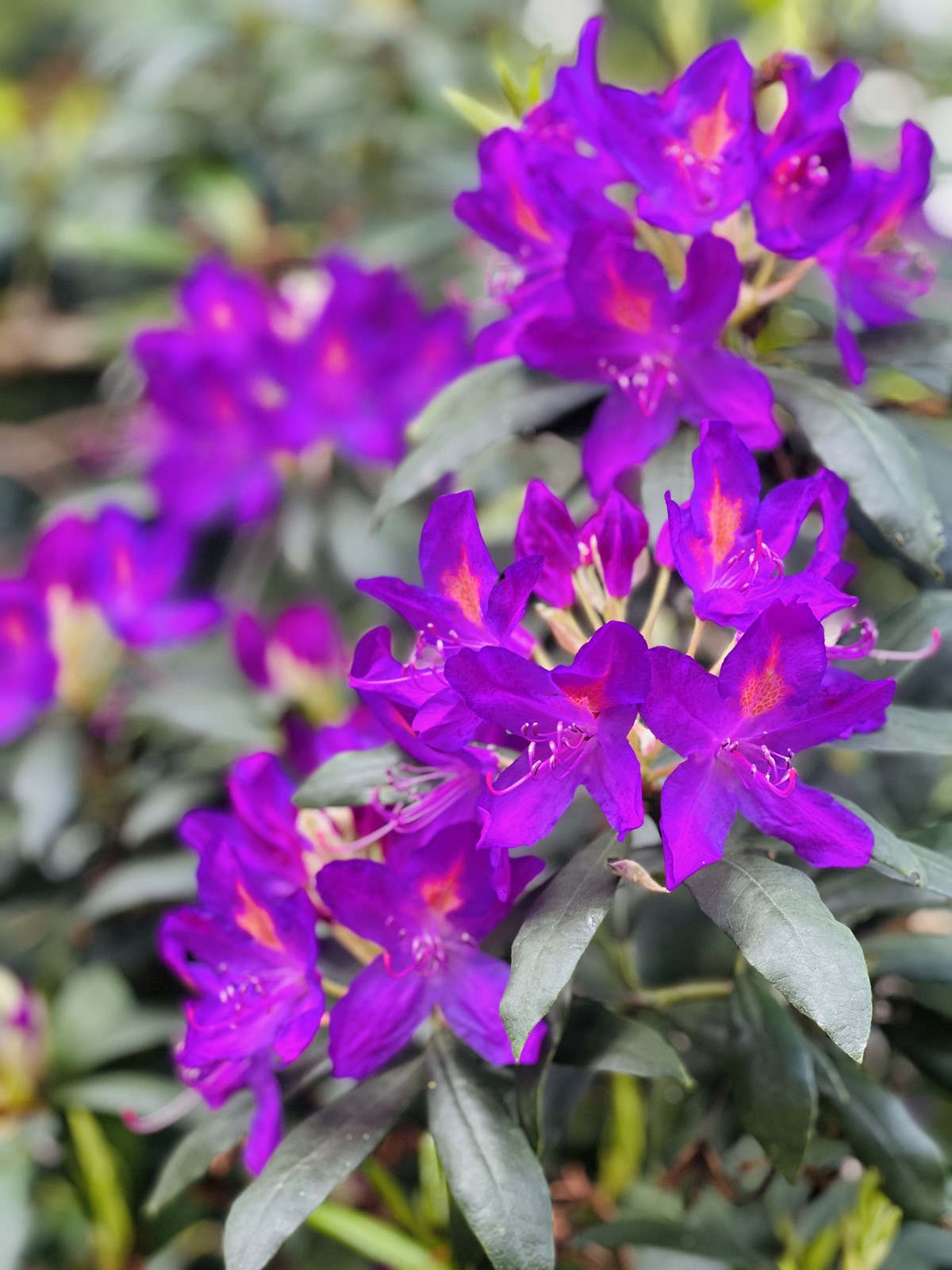 Buransh in India has the potential to create floral tourism opportunities taking after Japan’s cherry blossom tourism industry. (Source: Swasti Pachauri)
Buransh in India has the potential to create floral tourism opportunities taking after Japan’s cherry blossom tourism industry. (Source: Swasti Pachauri)
A word of caution, however. Buransh flowers face threats and are endangered in various regions, including India. Anthropogenic factors, rampant development projects, urbanisation, climate change challenges, and global warming jeopardise their survival. For instance, this year, rhododendrons have been observed blooming prematurely in many locations, posing significant threats to biodiversity. In response to these alarming circumstances, numerous conservation efforts must be implemented to safeguard the future of rhododendrons and ensure their long-term survival.
(The author has taken all the pictures at Kew Gardens, England.)
📣 For more lifestyle news, follow us on Instagram | Twitter | Facebook and don’t miss out on the latest updates!
Apr 19: Latest News
- 01
- 02
- 03
- 04
- 05


































